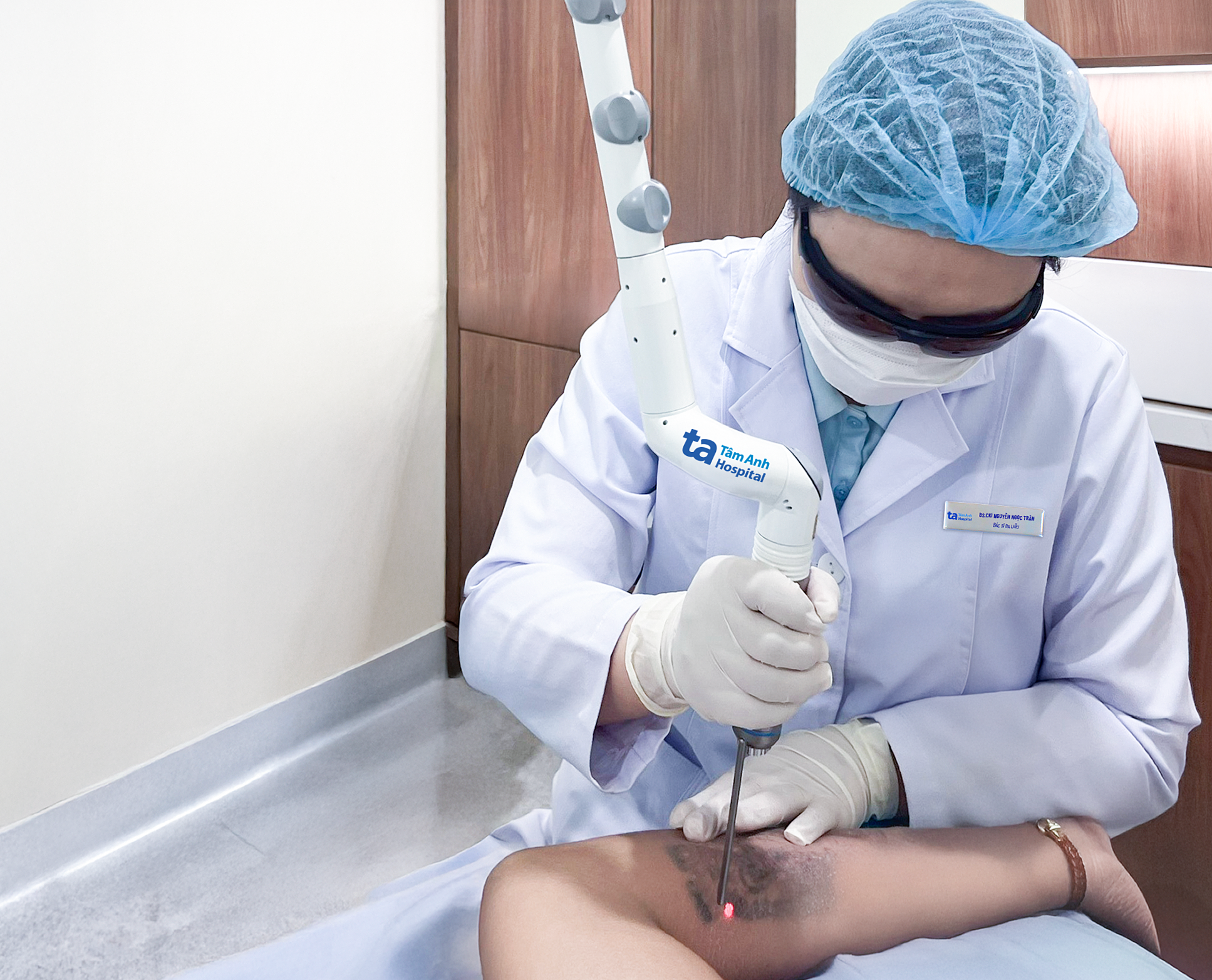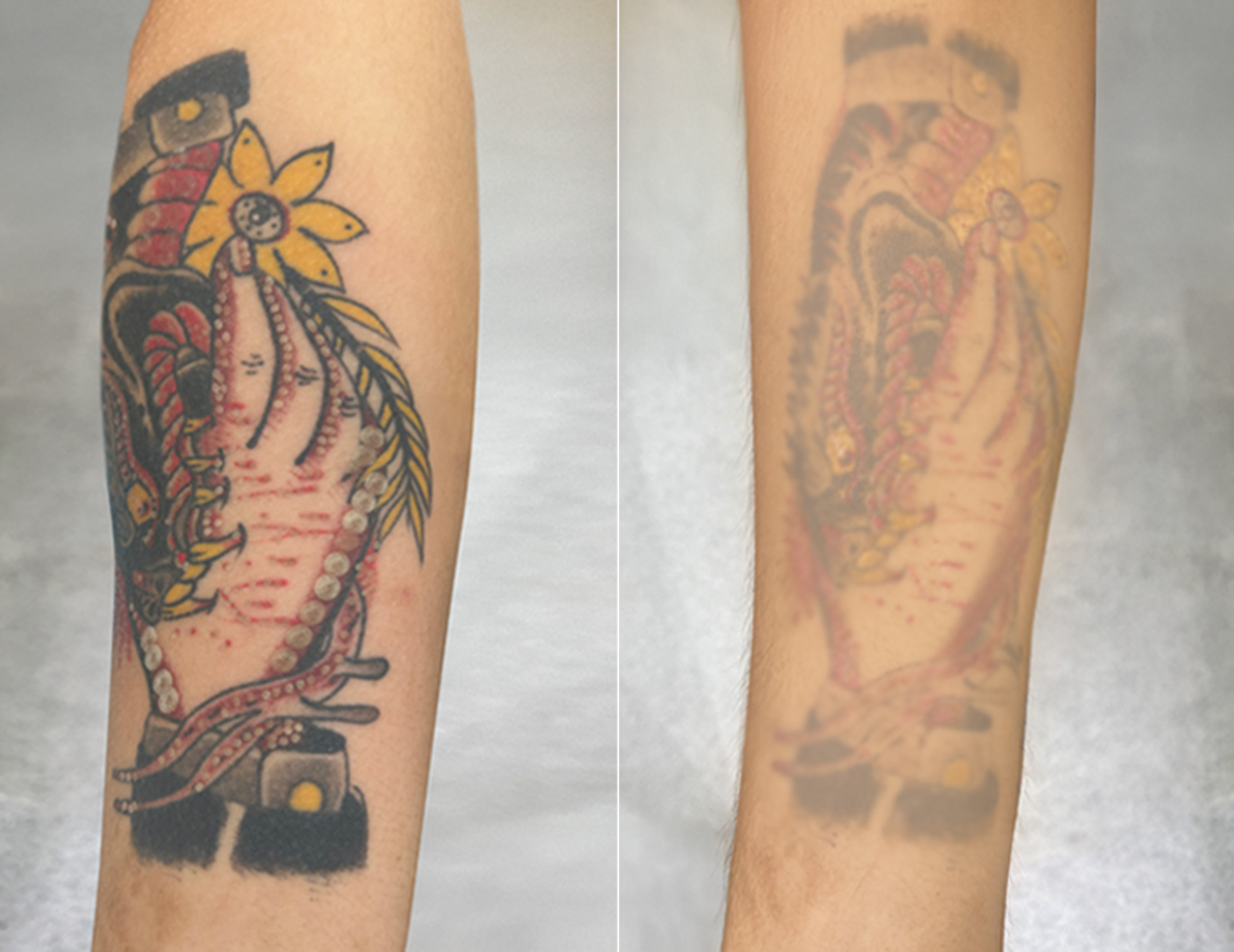Seven years ago, Dinh got a snake and a flower tattooed on his arm and back. He recently landed a job as a waiter at an international hotel in Dubai, but was told he couldn't have visible tattoos, especially on his arms, neck, or other exposed areas.
Dinh went to Tam Anh General Hospital in Ho Chi Minh City for tattoo removal. Doctor Ngo Chi Thien, a specialist in dermatology and cosmetic dermatology, said Dinh's tattoos were complex due to the digital tattooing technique used, the age of the tattoos, the multiple ink colors (black, red, and yellow), and the depth of the ink in the skin layers. Doctor Thien prescribed pico laser removal with a treatment plan of 6-10 sessions, each spaced about 4 weeks apart.
 |
A doctor uses a pico laser to remove Dinh's tattoos. Photo: Tam Anh General Hospital |
A doctor uses a pico laser to remove Dinh's tattoos. Photo: Tam Anh General Hospital
According to Doctor Thien, pico laser technology uses extremely short pulses of high energy to break down tattoo ink into tiny particles, making it easier for the body to eliminate them. This technology can handle many ink colors that were previously difficult to remove, including red, purple, orange, and blue-black. However, multicolored and older tattoos often require multiple treatments.
A 1,064 nm wavelength laser is typically used for dark ink colors such as black, blue-black, and gray, while a 532 nm laser is more effective for bright and warm colors like red, orange, yellow, and pink. For difficult colors like green and purple, doctors may use a different wavelength, such as 755 nm, or a combination of wavelengths for optimal results.
After six treatments, Dinh's tattoos faded significantly, and his skin healed well, with only mild redness for a few days. His skin healed completely without scarring or complications.
 |
Dinh's tattoos before and after 4 pico laser removal sessions. Photo: Tam Anh General Hospital |
Dinh's tattoos before and after 4 pico laser removal sessions. Photo: Tam Anh General Hospital
After the tattoo removal, Dinh must follow a proper skincare routine to maximize results and reduce the risk of hyperpigmentation or scarring. This includes protecting the treated area from the sun, using broad-spectrum sunscreen, moisturizing regularly, and avoiding scratching. He should also avoid applying any medication or using products of unknown origin to prevent infection or skin irritation.
Doctor Thien advises those considering tattoo removal to choose a reputable hospital for proper skin evaluation and safe removal methods to minimize the risk of complications and ensure even skin tone recovery.
Minh Huong
*The patient’s name has been changed.
| Readers can submit questions about skin aesthetics here for doctors to answer. |












